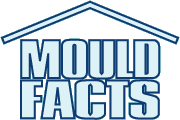Mold and Moisture
Mold growth is not always visible depending on the stage of growth and also whether the color of the mold itself is the same as the color of the material it’s growing on. For example, a white mold growing on a white background may not be easily visible.
Mold thrives where it’s damp. In water damaged indoor environments mold is often found on the inside of a wall cavity or on the underside of a carpet. While measuring the relative humidity in a building may indicate the potential for mold growth, the most important measurement is that of free water in the material. The “free water” is technically referred to as water activity and should not be confused with the moisture content of a material. The water activity ranges from 0 to 1.
As the water activity of organic material exceeds about 0.65, there is an increasing likelihood that mold will grow on it. Different fungi have different moisture requirements. Based on water requirements molds can be categorized as primary, secondary or tertiary colonizers.
Mold thrives where it’s damp. In water damaged indoor environments mold is often found on the inside of a wall cavity or on the underside of a carpet. While measuring the relative humidity in a building may indicate the potential for mold growth, the most important measurement is that of free water in the material. The “free water” is technically referred to as water activity and should not be confused with the moisture content of a material. The water activity ranges from 0 to 1.
As the water activity of organic material exceeds about 0.65, there is an increasing likelihood that mold will grow on it. Different fungi have different moisture requirements. Based on water requirements molds can be categorized as primary, secondary or tertiary colonizers.
Primary fungal colonizers
- Capable of growing at low water activity (<0.85).
- Primary colonizers prefer simple sugars.
- Primary fungal colonizers include molds such as:
- Aspergillus versicolor
- Aspergillus versicolor(25°C)
- Eurotium spp.
- Paecilomyces variotii
- Penicillium aurantiogriseum
- Penicillium brevicompactum
- Penicillium chrysogenum
- Wallemia sebi
Secondary fungal colonizers
- Require intermediate levels of water activity (0.85-0.90).
- Secondary fungal colonizers include:
- Aspergillus flavus
- Aspergillus nidulans
- Aspergillus sydowii
- Aspergillus versicolor (12°C)
- Cladosporium cladosporioides
- Cladosporium sphaerospermum
- Mucor circinelloides
- Rhizopus oryzae.
Tertiary fungal colonizers
- Require high water activity (>0.90), i.e., wet conditions. This group of fungi is generally used as indicator of moisture damage. Some tertiary colonizers, such as Chaetomium globosum and Stachybotrys chartarum prefer complex sugars (such as cellulose) or complex organics (such as wood).
- Tertiary fungal colonizers include:
- Alternaria alternata.
- Aspergillus fumigatus
- Chaetomium spp.
- Epicoccum spp.
- Exophiala spp.
- Fusarium spp.
- Mucor plumbeus
- Memnoniella echinata
- Phialophora spp.
- Phoma herbarum
- Rhizopus spp.
- Stachybotrys chartarum
- Trichoderma spp.
- Ulocladium consortiale.


